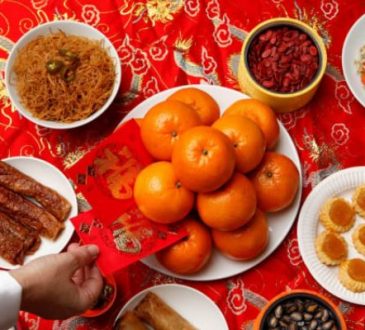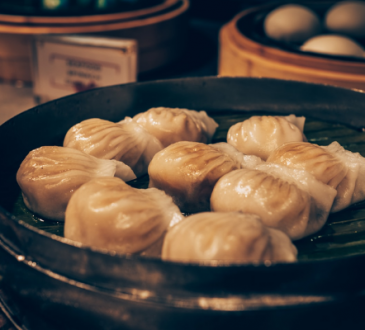Exploring the Timeless Tradition of Chinese Food with Soup
Chinese cuisine, renowned for its diverse flavors, aromatic spices, and vibrant colors, stands as a testament to the nation’s rich culinary heritage. Among its myriad culinary offerings, soups hold a special place, embodying both the nourishing essence and cultural significance deeply rooted in Chinese culinary traditions. In this culinary journey, we delve into the world of Chinese soups, uncovering their historical significance, diverse varieties, and enduring appeal that transcends borders.
Contents
Historical Roots:

The tradition of soup-making in China dates back thousands of years, with early records tracing its origins to the Zhou Dynasty (1046–256 BCE). Initially valued for their medicinal properties, soups were concocted using a plethora of ingredients believed to promote health and longevity. Over time, this utilitarian approach evolved into a culinary art form, with soups becoming an integral part of everyday meals and festive occasions alike.
Traditional Chinese Medicine (TCM) heavily influenced the development of soups, as ingredients were carefully selected based on their perceived healing properties and effects on the body’s Qi (life force). For instance, soups made with warming ingredients like ginger and ginseng were believed to dispel cold and invigorate the body, while those featuring cooling herbs like mint and chrysanthemum were favored during hot summer months to balance internal heat.
Varieties of Chinese Soups:
The diversity of Chinese soups is staggering, with regional variations, seasonal ingredients, and cooking techniques giving rise to a vast array of flavors and textures. From clear broths to hearty stews, each soup category offers a unique sensory experience that reflects the culinary ethos of its respective region.

- Clear Soups: Clear soups, known for their light yet flavorful broth, form the cornerstone of Chinese soup-making. They are typically made by simmering bones, meats, seafood, and vegetables over low heat to extract their essence, resulting in a clear and nourishing liquid. Popular varieties include:
- Chicken Corn Soup: A comforting blend of shredded chicken, sweet corn, and beaten eggs, seasoned with ginger and scallions.
- Winter Melon Soup: Featuring chunks of winter melon simmered with pork bones or seafood, seasoned with dried scallops and goji berries for a delicate sweetness.
- Watercress and Pork Rib Soup: A nutrient-rich broth infused with the earthy flavor of watercress and the robustness of pork ribs, often enjoyed for its purported cooling properties.
- Thickened Soups: Thickened soups, characterized by their velvety texture and hearty consistency, are achieved by incorporating starches or thickeners such as cornstarch or tapioca flour. These soups often feature an assortment of meat, seafood, and vegetables, resulting in a substantial and satisfying dish. Popular examples include:
- Hot and Sour Soup: A tangy and spicy concoction made with tofu, bamboo shoots, wood ear mushrooms, and shredded pork, thickened with vinegar and chili paste.
- Fish Maw Soup: A luxurious delicacy prized for its collagen-rich fish maw, simmered with chicken broth, mushrooms, and Chinese herbs until tender and flavorful.
- Crab and Corn Soup: A decadent blend of fresh crabmeat, sweetcorn kernels, and egg whites, thickened with cornstarch to achieve a creamy consistency.
- Noodle Soups: Noodle soups, a beloved staple in Chinese cuisine, combine the comforting warmth of broth with the satisfying slurp of noodles, creating a harmonious balance of flavors and textures. These soups often feature an assortment of toppings, ranging from thinly sliced meats to leafy greens and aromatic herbs. Popular varieties include:
- Beef Noodle Soup: A hearty broth infused with the rich flavor of beef bones and spices, served with tender slices of beef, chewy noodles, and garnished with green onions and cilantro.
- Wonton Soup: Delicate wonton dumplings filled with seasoned pork or shrimp, served in a clear broth alongside leafy greens and thinly sliced scallions.
- Lamian: Hand-pulled noodles served in a flavorful broth with various toppings such as braised beef, stewed pork, or assorted vegetables, popular in Northwestern China.
Cultural Significance:
Beyond their culinary appeal, Chinese soups hold deep cultural significance, playing a central role in family gatherings, festive celebrations, and social rituals. In Chinese culture, sharing a bowl of soup symbolizes warmth, hospitality, and familial ties, fostering a sense of unity and connection among loved ones.
During festive occasions such as Lunar New Year and weddings, elaborate soups are prepared to signify abundance, prosperity, and good fortune for the coming year. Ingredients with auspicious connotations, such as whole fish symbolizing surplus and longevity, and dried oysters representing wealth and prosperity, are commonly featured in celebratory soups.
Moreover, the act of preparing and serving soup is imbued with etiquette and symbolism, with traditional customs dictating the proper way to present and consume soups. For instance, it is customary to serve soup as the first course of a meal, signifying respect for guests and the beginning of a shared culinary journey.
Health and Wellness: In addition to their cultural significance, Chinese soups are valued for their health-promoting properties and therapeutic benefits. Drawing on the principles of Traditional Chinese Medicine (TCM), soups are often tailored to address specific health concerns and imbalances within the body.

Herbal soups, infused with a medley of Chinese herbs and tonic ingredients, are believed to nourish the body, strengthen the immune system, and restore vitality. Ingredients such as goji berries, astragalus root, and red dates are prized for their adaptogenic properties, helping the body adapt to stress and enhance overall well-being.
Furthermore, Chinese soups are revered for their ability to promote digestive health, support detoxification, and replenish vital nutrients. Ingredients like ginger, garlic, and medicinal mushrooms are often incorporated into soups for their anti-inflammatory, antimicrobial, and antioxidant properties, contributing to a holistic approach to wellness through nourishing and wholesome meals.
Conclusion:
In conclusion, Chinese soups represent a culinary tradition steeped in history, culture, and the art of nourishment. From humble beginnings as medicinal elixirs to cherished culinary creations enjoyed around the world, Chinese soups continue to captivate palates and hearts with their diverse flavors, nourishing qualities, and timeless appeal. As we savor each spoonful of soup, we not only indulge in a culinary delight but also partake in a cultural journey that celebrates the rich tapestry of Chinese cuisine.



